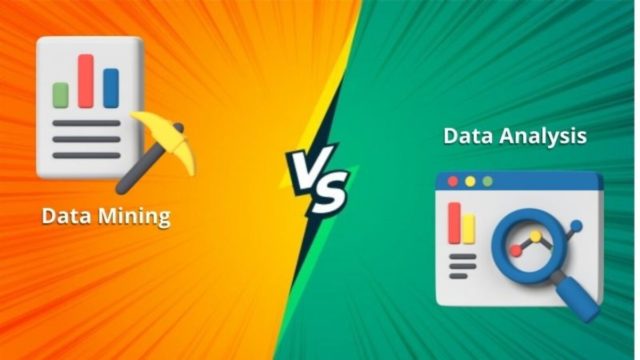With advances in computing power, Data Analysis has become automated, with complex data sets revealing insights for data-driven decisions. The digital transformation of businesses has led retailers, banks, and telecommunication providers, among others, to uncover patterns and relationships from large data sets.
Businesses are using Data Mining and Data Analytics to crunch data, discover patterns and extract valuable insights for a competitive edge. E-commerce and retail companies use these techniques for price optimization, promotions, and customer relationships, while banks and financial companies manage risk, fraud, and revenue generation with analytics.
As the world moves towards data-driven business models that leverage processes such as Data Mining and Data Analytics, it becomes necessary for the ambitious IT or Statistics graduate to upskill in these relevant methodologies. Whether a fresh graduate or a data practitioner, you may consider a Data Analyst Course for your resume and carve a career in data-driven companies.
Table of Contents
What is Data Mining
Data Mining, also known as knowledge discovery in data (KDD), is the discovery of patterns and correlations from large data sets to predict outcomes. It uses various mining techniques to sift through chaotic and noisy, irrelevant data for relevant information and make informed decisions.
Although coined only in the 1990s, Data Mining had its foundation long before that, combining the three scientific disciplines of statistics, AI, and machine learning to learn outcomes and make predictions. With the evolution of Big Data and high computing power, Data Mining technologies are emerging more powerfully than ever before.
The methods describe target datasets to predict outcomes using machine learning algorithms and organize and filter the data to discover useful information, such as fraud detection or security breaches. Techniques used are association rules, decision trees, neural networks, and K-nearest neighbor.
What is Data Analytics
Data Analytics is a broad term used to describe the science of analyzing raw data and arriving at conclusions. The process of Data Analysis is automated. Algorithms extract and convert raw data for decisions that optimize business processes and maximize profits and ROIs. Data analysis helps understand what’s working and what is not and manipulate data to achieve desired outcomes or power decisions based on the information.
It answers questions such as why something happened, what might happen next, and what to do. It uses various programming languages and software tools to visualize insights and make reports for predictions. Data Analytics uses multiple types of raw data that reveal trends and patterns and help devise the necessary metrics and KPIs to support decisions.
How does Data Analytics differ from Data Mining
Data Mining and Data Analysis are critical steps in any data-driven project for making conclusions and predictions.
Here are some key differences between the two processes:
While Data Mining is about identifying patterns and trends from large data sets, Data Analytics crunches and analyzes data for analysis.
Purpose
The chief purpose of Data Mining is to uncover hidden patterns in the data using machine learning algorithms and reach outcomes. The goals of Data Analytics are to develop models for making predictions, describing what’s happening, prescribing a course of action, and using analytics or hypotheses.
The type of Data handled
Data Mining extracts information from large, generally structured datasets, such as the Internet. Data Mining experts use algorithms to find patterns in the data for further analysis using mathematical rules. It requires structured data for clarity and accuracy of results.
While Data Analytics uses all types of raw data: structured, semi-structured, and unstructured. It does not require developing algorithms like in Data Mining but analyzing data patterns to make inferences for decision-making.
Process
Data Mining discovers knowledge in large datasets with the application of machine rules, hence known as “knowledge discovery.” Data Analytics uses various techniques of descriptive statistics, exploratory data analysis, and confirmatory data analysis. It also includes Data Mining.
Steps
The steps in Data Mining include data preparation, data collection, data extraction, and data interpretation. Data Analytics uses data discovery, data preparation and modeling, data visualization, and the interpretation of results to communicate to the stakeholders.
Methods
The methods in Data Mining include clustering, data cleaning, association, data warehousing, machine learning, and neural networks. Data Analytics uses both qualitative and qualitative methods for analysis.
Modeling
Data Mining uses Statistical, AI, and Mathematical models, whereas Data Analytics produces BI and predictive analysis models.
Output
The Data Mining output reveals the pattern in data. Data Analytics output is a hypothesis that may be verified or discarded based on the insights.
Data Mining often does not throw up answers but applies algorithms to make them usable for analysis. Data Analytics seeks answers to questions by testing hypotheses.
Forecasting
Data Mining helps businesses gain a perspective concerning historical data vs. current data. However, Data Analysis predicts outcomes and recommends solutions for business challenges.
Knowledge
Data Mining calls for knowledge of databases, machine learning, and statistics. Data Analytics requires expertise in databases, computer science, mathematics, and statistics.
Types
Types of Data Mining include Predictive Data Mining, Descriptive Data Mining, Classification Analysis, Regression Analysis, Time Serious Analysis, Clustering Analysis, and so on. Types of Data Analytics include Descriptive Analytics, Diagnostic Analytics, Prescriptive Analytics, and Predictive Analytics.
Visualization
Data Mining does not support visualization, but Data Analysis requires visualization of results to represent the data for analysis.
Both Data Mining and Data Analysis practices are already present in most enterprises, forming a critical framework for business decisions to manage risk, increase revenues, improve consumer experiences, and improve the bottom line. While they are interdependent, understanding the key differences between the two can help businesses leverage these technologies to maximize profit lines.
When combined, the two methods make the extraction of relevant insights and make them more applicable across industries.
Summary
Data Mining and Data Analytics help organizations harness the power of high-performance computing, complex database architectures, text analytics, and machine learning algorithms for solutions to business problems. Ultimately, they are both methods for transforming raw data into knowledge and valuable skills to learn in an increasingly competitive job market in Data Analytics, Business Analytics, BI, and Data Science.








